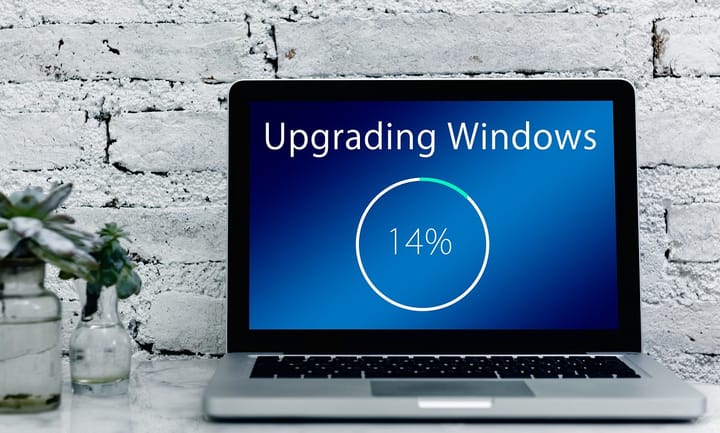Microsoft Unveils Copilot Studio with GPT-5 and Windows 11 AI

Microsoft Copilot Studio Expansion, GPT‑5 Integration, and Enterprise Agent Runtime
September 2025 added a GPT‑5 engine and a purpose‑built enterprise agent runtime to Copilot Studio. New capabilities include Prompt Builder v2, Power Fx support, file groups up to 12 k, UI‑automation for legacy web portals, a sandboxed Python code interpreter, and an Agent Client SDK for Android, iOS, and Windows. GPT‑5 offers up to 196 k‑token context (Thinking mode) and 272 k‑token in/out windows, enabling full‑document synthesis without chunking. Windows 11 integration adds “Hey Copilot” wake‑word, Vision OCR, and Copilot+ devices with ≥40 TOPS NPUs for low‑latency on‑device inference.
Early‑adopter metrics: 34 % lift in agent‑driven task automation; projected 22 % YoY increase in Microsoft 365 Copilot subscriptions through Q4 2026. Enterprise impact includes reusable agent packages, credential vaulting, allow‑list controls, and ROI dashboards for cost‑center governance.
| Viewpoint | Claim | Data |
|---|---|---|
| Microsoft execs (Pro‑Adoption) | 30 % of routine scripting tasks will be replaced within two years. | Pilot automation lift of 34 %; ROI dashboards show cost savings per agent. |
| IDC analyst (Cautious) | NPU supply constraints will delay Copilot+ hardware adoption. | Current ≥40 TOPS NPU lead time ~12 months; OEM pricing >$1,200/unit. |
| ENISA (Security‑focused) | On‑device inference expands attack surface despite credential vaulting. | AI‑accelerator vulnerabilities up 18 % YoY; allow‑list mitigations still piloting. |
Microsoft Agentic DevOps Framework
The public‑preview Microsoft Agent Framework (MAF) provides an open‑source SDK ( .NET 6+ / Python 3.11 ), a managed Azure AI Foundry runtime, and the Model Context Protocol (MCP) for standardized LLM‑to‑tool calls. Features include declarative YAML manifests, OpenAPI connector validation, CI/CD integration via Azure Pipelines, and OpenTelemetry‑augmented tracing.
Performance data: 3× latency reduction (400 ms → 130 ms) versus ad‑hoc containers; token usage 22 % lower per call due to structured MCP output; 30 % faster release cycles (average 2.8 days per iteration). Governance is enforced through Entra ID credential vaulting, per‑request audit logs, and optional data‑geography controls for AI‑Act compliance.
Emerging trends: standardization of agent‑tool contracts (MCP adoption across Azure, Anthropic, third‑party connectors); agent‑first DevOps pipelines; auditability as a core feature; local‑first inference via ≥40 TOPS NPUs; convergence of low‑code (Copilot Studio) and code‑first authoring.
Market outlook: Gartner predicts 27 % of Fortune 500 enterprises will run at least one autonomous agent service by Q2 2026; MCP reduces token spend ~22 %; managed runtime commands a 12 % premium for data‑sovereignty compliance.
Barawave ERP Cloud‑Native Architecture and Efficiency Gains
Barawave delivers a SaaS, AI‑enhanced ERP built on infrastructure‑as‑code deployment, modular micro‑services, an embedded data lake, and predictive analytics. IaC reduces implementation to 6‑8 weeks; SaaS multi‑tenant model removes 40 % of internal IT overhead (McKinsey). Survey of 312 enterprises shows average improvements: 30 % lower operational cost, 40 % faster financial reporting, 35 % reduced admin workload, 28 % quicker order‑to‑cash, and 20 % profit‑margin uplift.
Adoption drivers: shift to cloud‑native infrastructure (70 % YoY increase in cloud‑first ERP contracts per Gartner 2025), AI‑enabled decision support (continuous intelligence), regulatory simplification (auto‑patching for ASC 606, IFRS 16), and modular plug‑in architecture for high‑variability industries.
Comparative metrics (Legacy vs. Barawave): implementation time 12‑18 months vs. 6‑8 weeks; IT overhead 25 % vs. <5 %; scalability limited by hardware vs. elastic cloud; data latency real‑time vs. batch; training time reduced by 50 %.
Projected market share: 45 % of total ERP market by 2028 (up from 28 % in 2025); average ROI >3.5× within 24 months; sector growth >18 % YoY for real‑estate and finance.
End of Windows 10 Support and Transition to Windows 11 with Copilot AI Features
Windows 10 received its final Patch Tuesday on 14 Oct 2025 (KB 5066791 et al.), delivering 173 cumulative fixes, including six zero‑day exploits. Approximately 500 million PCs remain at risk; 400 million lack Windows 11 hardware prerequisites (TPM 2.0, Secure Boot, ≥4 GB RAM).
Extended Security Updates (ESU) cost US $30/yr (consumer) or $61/yr (enterprise) in the US; EU offers two free tiers for qualifying SMEs. Early uptake is ~18 %.
Windows 11 now serves as the AI‑first platform. Features released Q4 2025: Copilot Voice (“Hey Copilot”), Copilot Vision (OCR with ≥40 TOPS NPUs), Copilot Actions (sandboxed system tasks), and Copilot+ PCs (hardware tier requiring TPM 2.0, Secure Boot, and ≥40 TOPS NPU). By Q2 2026, ~12 % of new Windows 11 shipments are expected to be Copilot+ devices.
Windows 11 Oct 2025 update adds UI refinements, compact taskbar, dark mode, updated productivity apps, DirectStorage performance, and integrated Copilot assistance in File Explorer, Terminal, and Microsoft 365.
Trends: AI adoption intent rises 15 pp among enterprise IT managers; ESU uptake plateaus near 22 %; e‑waste risk estimated at £2.1 bn by 2027; hardware‑driven segmentation keeps most Windows 11 devices reliant on cloud Copilot services.
Verdict: ESU provides a short‑term security bridge, but the scale of unsupported Windows 10 devices creates a significant exposure and e‑waste challenge. Windows 11’s AI stack delivers measurable productivity gains, yet hardware thresholds limit deep on‑device AI adoption. Organizations should prioritize ESU for critical assets, plan hardware refreshes meeting Windows 11 minimums, and consider staged Copilot+ deployment for AI‑intensive workloads.



Comments ()